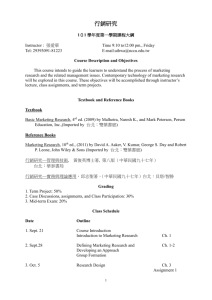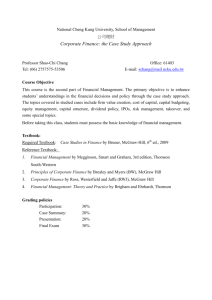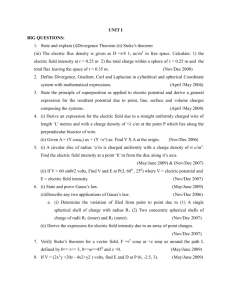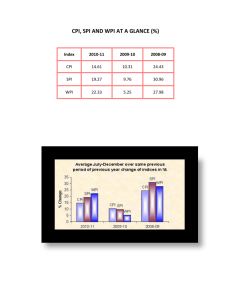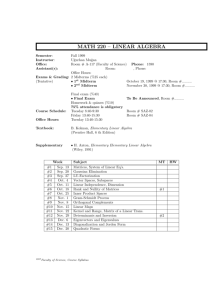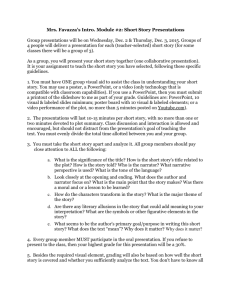16 marks - SNS Courseware
advertisement
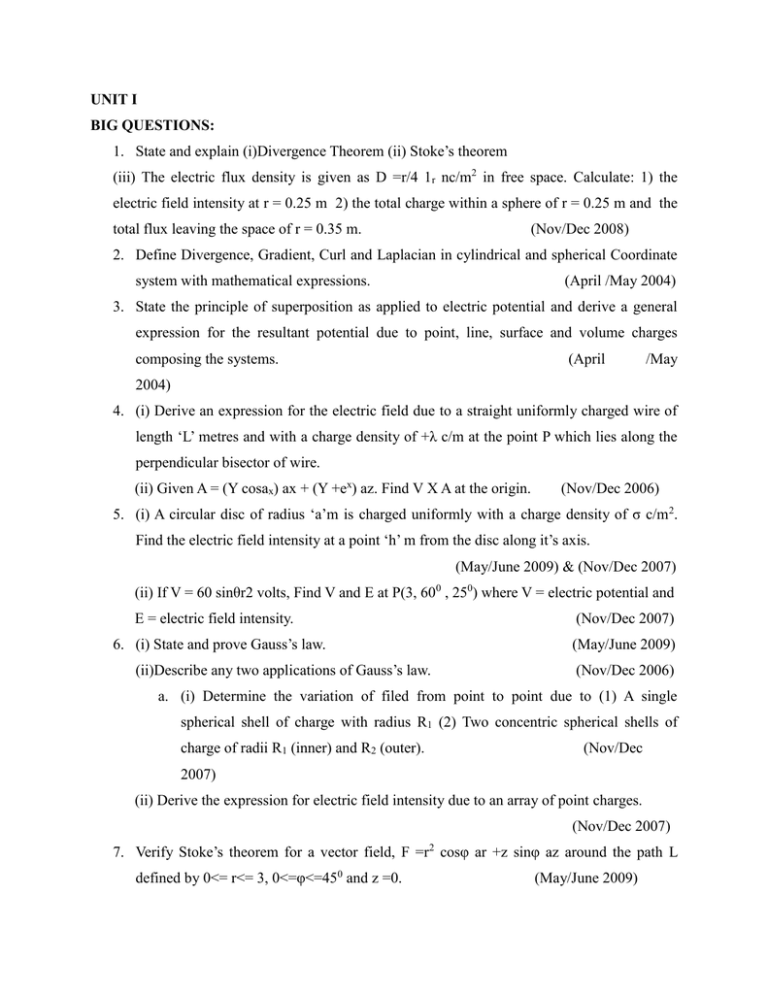
UNIT I BIG QUESTIONS: 1. State and explain (i)Divergence Theorem (ii) Stoke’s theorem (iii) The electric flux density is given as D =r/4 1r nc/m2 in free space. Calculate: 1) the electric field intensity at r = 0.25 m 2) the total charge within a sphere of r = 0.25 m and the total flux leaving the space of r = 0.35 m. (Nov/Dec 2008) 2. Define Divergence, Gradient, Curl and Laplacian in cylindrical and spherical Coordinate system with mathematical expressions. (April /May 2004) 3. State the principle of superposition as applied to electric potential and derive a general expression for the resultant potential due to point, line, surface and volume charges composing the systems. (April /May 2004) 4. (i) Derive an expression for the electric field due to a straight uniformly charged wire of length ‘L’ metres and with a charge density of +λ c/m at the point P which lies along the perpendicular bisector of wire. (ii) Given A = (Y cosax) ax + (Y +ex) az. Find V X A at the origin. (Nov/Dec 2006) 5. (i) A circular disc of radius ‘a’m is charged uniformly with a charge density of σ c/m 2. Find the electric field intensity at a point ‘h’ m from the disc along it’s axis. (May/June 2009) & (Nov/Dec 2007) (ii) If V = 60 sinθr2 volts, Find V and E at P(3, 600 , 250) where V = electric potential and E = electric field intensity. 6. (i) State and prove Gauss’s law. (ii)Describe any two applications of Gauss’s law. (Nov/Dec 2007) (May/June 2009) (Nov/Dec 2006) a. (i) Determine the variation of filed from point to point due to (1) A single spherical shell of charge with radius R1 (2) Two concentric spherical shells of charge of radii R1 (inner) and R2 (outer). (Nov/Dec 2007) (ii) Derive the expression for electric field intensity due to an array of point charges. (Nov/Dec 2007) 7. Verify Stoke’s theorem for a vector field, F =r2 cosφ ar +z sinφ az around the path L defined by 0<= r<= 3, 0<=φ<=450 and z =0. (May/June 2009) 8. If V = (2x2y +20z - 4x2+y2 ) volts, find E and D at P (6, -2.5, 3). (May/June 2009) 9. (i) Determine the electric field intensity of an infinitely long, straight, line charge of a uniform density ρλ in air. (Nov/Dec 2008) & (Nov/Dec 2003) (ii) Determine Electric field intensity at P (1,2,5) due to a point charge of 10nc at Q(1,-2,3). (Nov/Dec 2008) 10. (i) Explain potential due to charged disc. (ii) Three charged cylindrical sheets are present in three spaces with σ = 5C/m 2 at R = 2m σ = -2C/m2 at R = 4m & σ = -3C/m2 at R = 5m. Find flux density at R = 1, 3, 4, 5 & 6 m. (April /May 2008) 11. (i) Explain the electric field due to ‘n’ number of charges. (April /May 2008) (ii) A uniform line charge of 1nC is situated along x-axis between the points (-500, 0) and (500, 0) mm. Find the electric scalar potential at (0,1000) mm. (April /May 2005) 12. (i) State super position theorem in relevance to field theory and derive the equation for total electric field intensity. (Nov/Dec 2006) (ii) Consider two point charges Q1 =8πε0 coulombs and Q2= -4 πε0 coulombs situated at (-1, 0, 0) m respectively. Find the electric field intensity at the point (0, 0, 1). Draw the phasor diagram. (Nov/Dec 2006) 13. (i) Let, A =5ax, and B = 4 ax+By ay, Find by such that, angle between , A and , B is 450. If, B also has a term Bz az, what relationship must exist between by By and Bz. (ii) A uniform line charge ρL = 25nC/m lies on the line, x= -3m and y= 4m, in free space. Find the electric field intensity at a point (2, 3, 15) m. (May/June 2006) 14. (i) If two vectors are expressed in cylindrical coordinates as A = 2ax +π ay +az B = -ax+3π/2 ay -2azCompute a unit vector perpendicular to the plane containing A and B. (ii) A regular tetrahedron has vertices at P1 (2, 0, 0) . P2(-1, √3, 0), P3(-1, -√3, 0) , P4(0, 0, 2√2). Charges of 1mC are located at each of the four vertices. If the configuration is located in free space, find the magnitude of force on each charge. UNIT II BIG QUESTIONS: 1. (i) State and prove Ampere’s law. (May/June 2007) (ii) Find the magnetic field intensity at the centre ‘O’ of a square of sides equal to 5 m and carrying 10 amperes of current. (May/June 2009) 2. (i) Obtain an expression for magnetic vector potential. (ii) At a point P(x, y, z) the components of magnetic vector potential A are given as Ax =(4x +3y +2z); Ay = (5x +6y +3z); Az = (2x +3y +5z); Determine B at point P. (May/June 2009) 3. (i) State Biot -Savart’s law in vector form. (ii)Obtain the expression for magnetic field intensity due to a circular loop of wire carrying a current I, placed with its centre at origin. (Nov/Dec 2008) 4. (i) Derive an expression for Magnetic Gauss law in point form and integral form. (ii) Explain the magnetic field intensity due to a straight wire. (April /May 2008) 5. Obtain an expression for the magnetic field intensity due to infinitely long current carrying conductor. 6. (i) Find the force exerted between current carrying conductors kept in ‘1’ meter distance and carries the current in the same direction. (April /May 2008) (ii) Find the magnetic field intensity at the origin due to a current element IdL = 3π (u x + 2uy +3uz) μA. m, at the point P (3, 4, 5) in free space. (May/June 2007) 7. (i) Consider a conductor of rectangular loop ‘abcd’ situated in a uniform magnetic field of ‘B’ wb/m2. Derive the expression for torque and magnetic moment. (Nov/Dec 2006) (ii) A single –phase circuit comprises two parallel conductors A and B, 1cm diameter and spaced 1 metre apart. The conductors carry currents of +100 and -100 amps respectively. Determine the field intensity at the surface of each conductor and also in the space exactly midway between A and B. (Nov/Dec 2006) 8. (i) Consider a solenoid in a uniform magnetic field of flux density ‘B’ wb/m 2. Obtain the expression for the torque on the solenoid. (ii) A conductor located at x =0.4 m; y =0 and 0< z<2.0 m carries a current of 5.0 A in the az direction. Along the length of conductor B = 2.5az T. Find the torque about Z axis. (May/June 2009) 9. (i) Obtain the expression for magnetic field intensity at the centre of a circular wire. (ii) If the vector magnetic potential is given by A = 10x2+y2+z2u x, obtain the magnetic flux density in vector form. (May/June 2007) 10. (i) A rectangular loop (8 x 4) m, carrying 10A in placed on z =0 plane. Find the field intensity at (4, 2, 0) m. (ii) Find the magnetic flux density around infinitely long straight conductor by magnetic vector potential. (Nov/Dec 2005) 11. (i) Explain the constructional features of solenoid. (ii) Derive expressions for a magnetic flux density (B) at any point along the axis of the solenoid. (iii) Draw the variations of flux density (B) along the axis. (April /May 2005) 12. (i)Define a magnetic circuit with a sketch and hence obtain the expression for its reluctance. (ii) A magnetic circuit employs an air core toroid with 500 turns, cross sectional area 6cm2 mean radius 15cm and coil current 4A. Determine the reluctance of the circuit, flux density and magnetic field intensity. (Nov/Dec 2004) 13. A rectangular loop in the loop in the xy plane with sides b1 and b2 carrying a current I lies in a uniform magnetic field B = ax Bx + ay By + az Bz . Determine the force and torque on the loop. (Nov/Dec 2003) UNIT III BIG QUESTIONS: 1. (i) Derive an expression for the capacitance of a spherical capacitor with conducting shells of radius ‘a’ and ‘b’. (ii) Obtain the expressions for the energy stored and energy density in a capacitor. (May/June 2009) 2. (i) Derive the boundary conditions between two magnetic media. (ii) A solenoid has an inductance of 20mH. If the length of the solenoid is increased by two times and the radius is decreased to half of it’s original value, find the new inductance. (May/June 2009) 3. (i) An air core toroid has a mean radius of 40mm and is wound with 4000 turns of wire. The circular cross section of the toroid has a radius of 4mm. A current of 10A is passed in the wire. Find the inductance and the energy stored. (ii) Calculate the inductance of a 10m long co-axial cable filled with a material for which μr= 80 and radii of inner and outer conductors are 1mm and 4mm respectively. (Nov/Dec 2008) 4. (i) Derive the boundary relations at the boundary between a conductor and a dielectric. (Nov/Dec 2008) (ii) Parallel plate capacitor is of area 1m2 and has a separation of 1mm. The space between the plates is filled with dielectric of Σn =25. If 1000V is applied, find the force squeezing the plates together. (April /May 2008) 5. (i) Three point charges 1, 2, 3 coulombs are situated in free space at the corners of an equilateral triangle of side 1m. Find the energy stored in the system. (ii) Show that the inductance of the cable L= μl2πlnbaH. (April /May 2008) 6. (i) Derive an expression for the capacitance of a parallel plate capacitor with two dielectric media. (ii) A parallel plate capacitor with a separation of 1cm has 29kV applied, when air was the dielectric used. Assume that the dielectric strength of air as 39kV/cm. A thin piece of glass with εr =6.5 with a dielectric strength of 290kV/cm with thickness 0.2 cm is inserted. Find whether glass or air will break. (Nov/Dec 2007) 7. (i) Derive an expression for inductance of a solenoid with N turns and l meters length carrying a current of I amperes. (ii) Calculate the inductance of solenoid of 200 turns wound tightly on a cylindrical tube of 6cm diameter.The length of the tube is 60cm and the solenoid is in air.(Nov/Dec 2007) 8. (i)A parallel plate capacitor has a plate separation t. The capacitance with air only between the plates is C. When a slap of thickness ‘t’ and relative permittivity ε r is placed on one of the plates, the capacitance is C’. Show that C’/C = εrt/(t’ +εr (t-t’)). (Nov/Dec 2007) (ii) Obtain the expression for the inductance of a toroid. (May/June 2007) 9. (i) A dielectric slab of flat surface with relative permittivity 4 is disposed with its surface normal to a uniform field with flux density 1.5C/m2. The slab occupies a volume of 0.08m3 and is normally polarized. Determine (1) The polarization in the slab and (2) The total dipole moment of the slab. (ii) Capacitance of coaxial cable with two dielectrics ε1 and ε2. (May/June 2007) 10. (i) Discuss briefly about nature of dielectric materials. (ii) Given the potential field, V = 50 sinθr2V, in free space, determine whether V satisfies Laplace’s equation. (May/June 2007) 11. (i) Explain and derive the polarization of a dielectric material. (ii) Draw and explain the magnetization curve and hysteresis loop of a toroid with ferromagnetic core. List out any five ferro magnetic material. (Nov/Dec 2006) 12. A solenoid 25cm long, 1cm mean dianeter of the coil turns a uniformly distributed windings of 2000 turns. The solenoid is placed in uniform field of 2 tesla flux density. A current of 5A is passed through the winding. Detertmine the (1) maximum force on the solenoid (2) maximum torque on the solenoid and (3) compute the magnetic moment on the solenoid. (Nov/Dec 2004) 13. Evalauate the capacitance of (i) a spherical satellite 1.5m diameter in free space. (ii) a co-axial cable 1.5m long filled with polyethylene (εr =2.26) with inner conductor of radius 0.6 mm and inner radius of outer conductor 3.5 mm. (iii) an infintely long conductor with 1.5 mm radius and suspended horizontally at a height of 15 m above a conducting plane and parallel to it in air. (April /May 2004) 14. (i) Calulate the inductance of a ring shaped coil having a mean diameter of 20 cm. Wound on a wooden core of 2 cm diameter. The winding is uniformly distributedand contains 200 turns. (ii) A coil has a self inductance of 1H and a resistance of 4 ohms if it is connected to a 40 volts DC supply,estimate the energy stored in the magnetic field whrn the current has attained its final steady value. (April /May 2004) UNIT IV BIG QUESTIONS: 1. Write down the Maxwell’s equation in integral and point form and give their physical interpretation. 2. Derive the poynting vector from Maxwell’s equation and explain. 3. Derive the Maxwell’s curl equation from ampere’s law and faraday’s law. Explain the equations in phasor form for time harmonic fields. 4. A circular loop of N turns of conducting wire lies in the x-y plane with its center at the origin of a magnetic field specified by B = az B0 cos(πr/2b)sinωt, where b is the radius of the loop and ω is the angular frequency. Find the emf induced in the loop. (Nov/Dec 2003) 5. Define poynting vector and deduce the poynting’s theorem neatly. (April/May 2004) 6. State and prove Poynting theorem. (Nov/Dec 2006) 7. Prove that ▼ x E = -δB /δt. (May/June 2007) 8. Discuss about Poynting vector and power flow. (May/June 2007) 9. Obtain the expression for instantaneous power flow /unit area. (May/June 2007) 10. From the fundamental law, derive the generalized Maxwell’s equations in integral form. (Nov/dec 2004) 11. Define poynting vector and prove that the electromagnetic power flow is the product of electric and magnetic field intensities. (Nov/dec 2004) 12. If D = 20x aX -15y ay+ kz aZ µC/m2, find the value of k to satisfy the Maxwell’s equation for region σ =0 and ρv= 0. (May/June 2006) 13. A conductor 1 cm in length is parallel to z axis and rotates at radius of 25 cm at 1200 rpm. Find induced voltage, if the radial field is given by B = 0.5ar T. (May/June 2006) 14. If the magnetic field H = (3x cos β +6y sin α )az, find current density J if the fields are invariant with time. 15. Derive the expression for total power flow in a coaxial cable. (May/June 2006) (May/June 2006) 16. A conducting cylinder of radius 5 cms, height 20cm , rotates at 600 rps in a radial field B =0.5 tesla. The sliding contacts at the top and bottom are connected to a voltmeter. What is the reading of voltmeter? (May/June 2006) 17. The conduction current flowing through a wire with conductivity σ = 3 x 107 s/m and relative permittivity εr = 1 is given by Ic = 3 sinωt (mA). If ω =108 rad/s, Find the displacement current? (May/June 2006) 18. A material for which σ = 4.5 mho/m and εr =1, electric field intensity is E = 300 sin109t ux V/m. Determine the conduction and displacement current densities and the frequency at which they equal magnitude. (Nov/Dec 2006) 19. Explain about displacement current and displacement current density. Also find displacement current density for the field E = 300 sin109t V/m. (Nov/Dec 2006) 20. Find the frequency at which conduction current density and displacement current density are equal in (1) distilled water, for which εr =81 and σ = 2.0 x 10-4 mho/m. (2) sea water, for which εr =1 and σ = 4.0 mho/m. (May/June 2007) 21. Given the conduction current density in a lossy dielectric as J c =(0.02 sin109t) A/m2. Find the displacement current density if σ = 103 mho/m and εr =6.5 (Nov/Dec 2006) UNIT V BIG QUESTIONS: 1. ( i ) Derive the general wave equation. ( ii )Discuss about the plane waves in lossy dielectrics. (April/May 2008) (May/June 2007) 2. Briefly explain about the wave incident ( i ) normally on a perfect conductor ( ii )obliquely to the surface of perfect conductor. (April/May 2008) 3. Derive the wave equations in phasor form and also derive for α,β,γand η. (Nov/Dec2007) 4. Explain in detail the wave incident normally on perfect dielectric. (May/June 2007) 5. (i)Explain about the propagation of EM waves in good conductor. (ii) A uniform plane wave is travelling at a velocity of 2.5 x 105 m/s having wavelength λ = 0.25mm in a good conductor. Calculate the frequency of wave and the conductivity of the medium. 2007) (Nov/Dec 6. Derive the wave equations for plane waves in ( i) free space ( ii) homogeneous materials (iii)conducting medium. (April/May 2008) 7. (i) Describe about linear and circular polarization. (ii) Describe about reflection of plane waves by a perfect dielectric. (May/June 2007) 8. (i) Calculate the attenuation constant and phase constant for a uniform plane wave with frequency of 10 GHz in a medium for which μ = μ0 , εr =2.3 and σ =2.56 x 10-4mho/m (ii) Derive the expressions for the attenuation constant, phase constant and intrinsic impedance for a uniform plane in a good conductor. (May/June 2006) 9. (i) Assume that E and H waves, travelling in free space, are normally incident on the interface with a perfect dielectric with εr =3. Calculate the magnitudes of incident, reflected and transmitted E and H waves at the interface. (ii) A uniform plane wave of 200MHz, travelling in a free space impings normally on a large block of material having εr = 4, μr = 9, σ = 0. Calculate transmission and reflection coefficients at the interface. (May/June 2006) 10. Derive the expression for total field when a horizontally polarized EM wave is incident obliquely on a perfect conductor. 11. Derive the expression for total field when a vertically polarized EM wave is incident obliquely on a perfect conductor. 12. Determine the reflection coefficient of oblique incidence in perfect dielectric for perpendicular polarization. 13. Determine the reflection coefficient of oblique incidence in perfect dielectric for parallel polarization. 14. A lossy dielectric is characterized by εr = 2.5, μr = 4 and σ = 10-3 mho/m at 10MHz. Let E =10e-Vz ax V/m. Find (i) α (ii) β (iii) λ (iv) Vp (v) η ? 15. Given two dielectric media, medium 1 is free space and medium 2 has ε2 = 4 ε0 and μ2 = μ0 . Determine reflection coefficient for oblique incidence θ1 =30ο for a) perpendicular polarization and b) parallel polarization. 16. For a lossy dielectric material having εr = 48, μr = 1, σ = 20 s/m. Calculate the propagation constant at a frequency of 16 GHz. 17. Find the depth of penetration of plane wave in copper at a power frequency of 60Hz and at microwave frequency 1010 Hz. Given σ = 5.8 x 107 mho/m 18. (i)Derive the wave equation starting from maxwell equation for free space (ii)Explain reflection of uniform plane waves with normal nicidence at a plane dielectric boundary. (May/June 2009) 19. Explain the types of polarization of uniform plane wave. (May/June 2009) 20. (i)Derive wave equation for E and H in conducting medium (ii)Write briefly on total internal reflection (Nov/Dec 2009)
